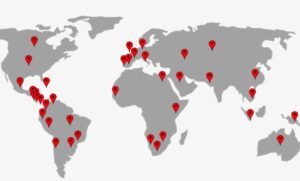Methods
Retrospective review of patients treated in a single vascular unit over a two year period. Selection criteria included all diabetic patients who underwent surgical debridement and/or minor amputation for tissue loss in anatomical areas where usual standard of wound care and more traditional surgical grafting is frequently unsuccessful. Treatment outcomes at 30 days were measured as complete epithelialisation, persistent wounds, return to theatre for further surgical debridement (treatment failure).
Results
44 applications were included in the study in 38 (86%) males and six (14%) females. All patients were diabetic and treated as inpatients. All applications occurred in sterile conditions in theatre with the tissue matrix secured with skin staples or absorbable sutures and secured with negative pressure wound therapy set at -75mmHg continuous pressure. Treatment protocol required dressings to be left in situ for 7 days and patients to be non-weight bearing for this period as a minimum. At time of submission, 19 wounds were healed, 14 wounds remain under review and 11 have failed treatment. Three patients have required a second application of tissue matrix. All three have experienced complete wound epithelialisation.
Conclusions
The management of neuro-ischaemic wounds in diabetic patients remains challenging. This cohort of patients are at high risk of major amputation despite re-vascularisation and traditional wound management strategies. This novel technology has shown encouraging results in this carefully selected group of patients which may delay and potentially prevent limb loss. Wider application of this tissue matrix technology and more rigorous analysis of patient outcomes is required in order to further explore how to optimise it use in this vulnerable patient population. We are currently launching a randomised control trial comparing this technology with usual standard of care in this cohort.



